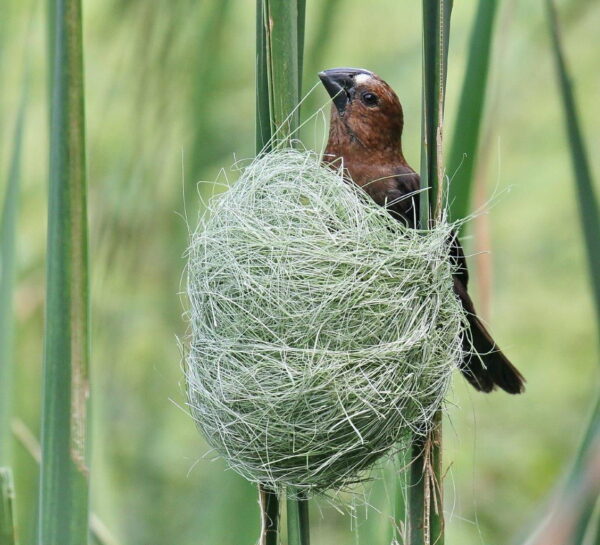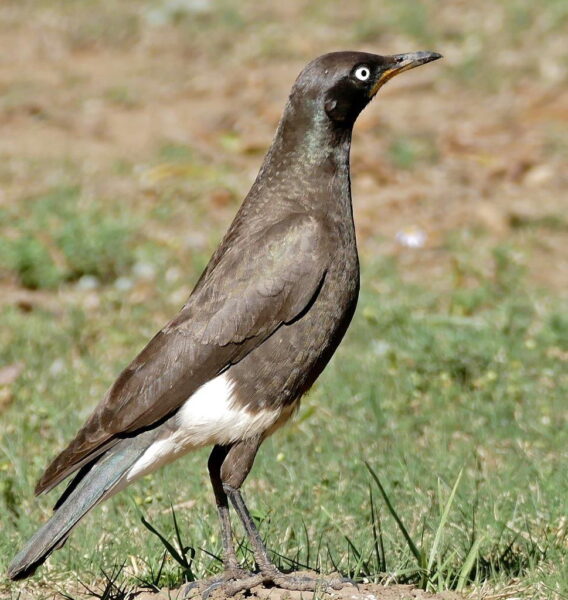The fabulous aloe display of winter had faded, but this is where Erythrina has stepped in. It’s not native to the Berg, and not often planted because it is frost-tender, but thrives in this, the warmest place in the Berg. Gurney’s Sugarbird was in constant attendance, so too were less typical visitors. The Cape Rock-Thrush was one. Its beak is not adapted for flower-probing, so it adopted the time-tested pirate trick of boring holes at the base of the florets.
Talking of new careers for birds, how about Pied Starlings thinking about becoming oxpeckers or Cattle Egrets? A group was attending a few cows, and some of the starlings were foraging in the grass right at the cows’ feet. Others were perched on the cows’ backs, pecking at ticks and other little creatures among the fur.
Another surprise was finding the Fairy Flycatcher at this time of year. It is very much a bird of the high Berg; it breeds there, only descending to lower altitudes in winter. But there it was, fossicking in a big acacia beside the main road below the sign-in gate.
The tropical migrants are back. Early morning sees dozens of Greater Striped Swallows and White-rumped Swifts swirling above the lawn. There were plenty of cuckoo calls – Red-chested, Black, Klaas’s and Jacobin. Both the Violet-backed Starling and Paradise Flycatcher were seen several times. Biggest news of all was a new “tick” for The Cavern; a Thick-billed Weaver. Apart from a population around Jo’burg – reputedly originating from aviary escapees – this is a lowland species. It breeds only in reed-beds, so look for it in future in the small vlei just above Natural Pool.


